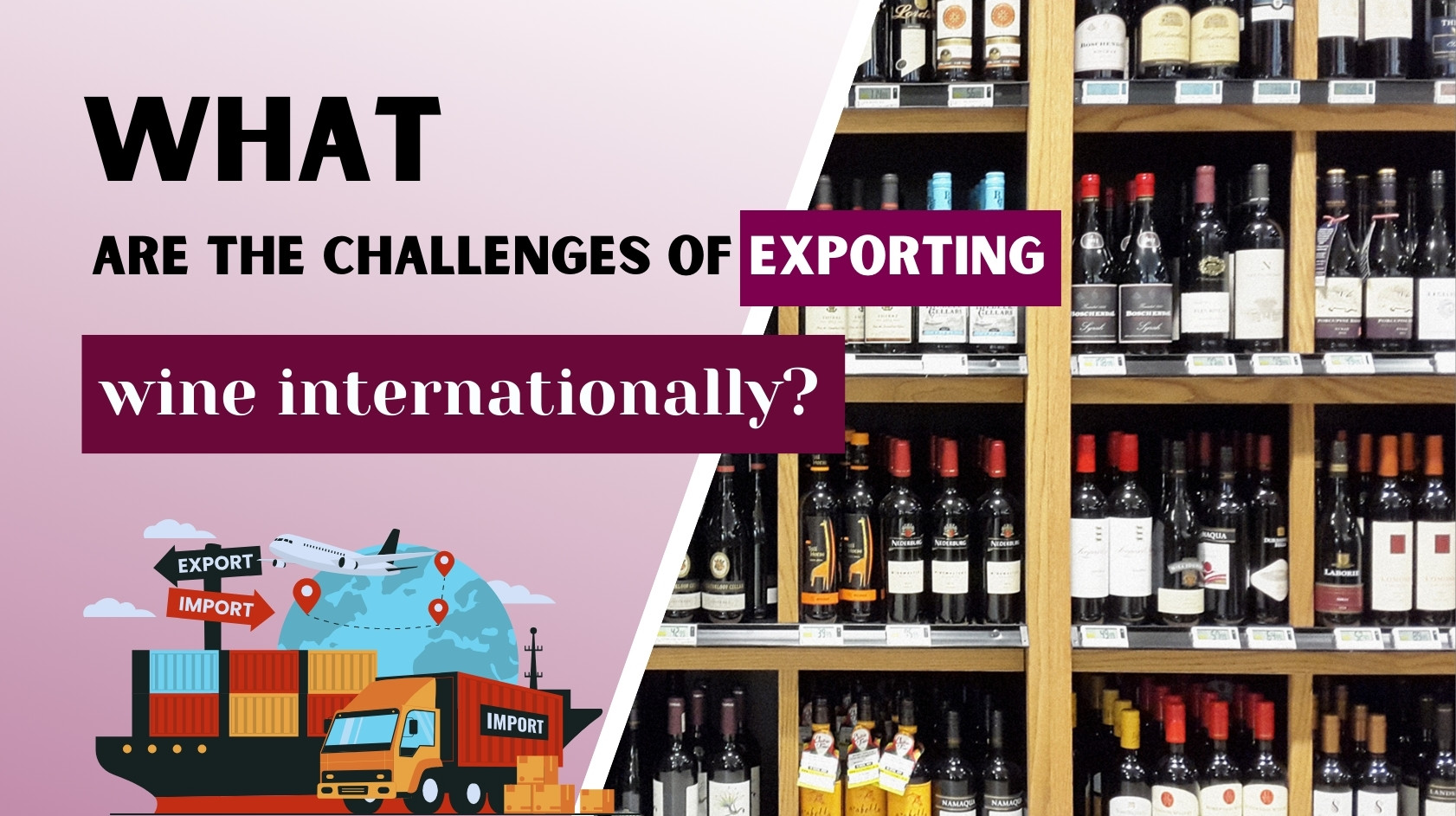Challenges in Exporting Wine and How to Overcome Them

Exporting wine to international markets is a great way for wineries to grow their brand and reach more customers. However, it comes with many challenges, including regulations, market competition, logistics, and rising costs.
In this article, we will explore the biggest obstacles wine exporters face and how they can successfully overcome them.
1. Dealing with Regulations and Tariffs
One of the biggest challenges in exporting wine is the different rules and taxes in each country. Every country has its own:
Import laws
Quality standards
Labeling requirements
Tax structures
For example, the U.S. once considered adding a 200% tariff on European wines. This caused fear among importers and led to financial losses. Similarly, trade tensions between the U.S. and Europe have made it harder for some wines to enter certain markets.
How to Overcome This Challenge:
Research the regulations of your target country before exporting.
Work with local experts or importers who understand the laws.
Stay updated on trade policies and potential tariff changes.
2. Competing in a Crowded Market
The global wine market is dominated by well-known wine-producing countries like France, Italy, and Spain. These countries have strong traditions, loyal customers, and well-established brands.
On top of that, consumer preferences are changing. Some markets are drinking less red wine, which has caused an oversupply issue for countries like Australia.
How to Overcome This Challenge:
Offer something unique, such as organic wines, rare grape varieties, or sustainable packaging.
Target emerging markets where demand for wine is growing.
Use creative marketing strategies, such as storytelling, social media, and influencer partnerships.
3. Logistics and Supply Chain Issues
Wine exportation depends on smooth transportation and delivery. However, many things can go wrong, including:
Port congestion and delays
Shortages of shipping containers
Equipment failures at ports
Unpredictable weather conditions
For example, the Port of Cape Town faced major delays due to bad weather and broken equipment, causing shipment backlogs.
How to Overcome This Challenge:
Work with reliable shipping partners who have experience in handling wine.
Use multiple transport options (sea, air, and land) to avoid delays.
Plan ahead and have backup suppliers or routes.
4. Rising Costs and Inflation
The cost of wine production and exportation is increasing due to:
Higher shipping fees
Expensive packaging materials
Rising costs of grapes and production
Inflation affecting global prices
In 2022, the value of international wine trade reached a record high, but this was mainly due to increased prices. In reality, the total volume of wine exports dropped by 5%.
How to Overcome This Challenge:
Look for cost-efficient packaging that still maintains quality.
Optimize logistics to reduce transportation costs.
Focus on premium markets where customers are willing to pay more.
5. Building a Strong Brand in a New Market
Some consumers may hesitate to buy wine from lesser-known regions. New wine-producing countries often struggle with perceptions of lower quality compared to famous regions like Bordeaux or Tuscany.
For example, Indian winery Sula Vineyards successfully entered global markets by focusing on unique grape varieties and creative branding.
How to Overcome This Challenge:
Obtain international certifications to prove quality.
Participate in global wine competitions for recognition.
Highlight your winery’s story, traditions, and unique qualities in your marketing.
6. Strategies for Successful Wine Exporting
Despite these challenges, there are many ways for wineries to succeed in international markets:
1. Research Your Target Market
Understand local regulations, consumer preferences, and competitor strategies.
2. Stay Compliant with Regulations
Work with local importers and ensure your wine meets all legal requirements.
3. Build Relationships with Local Partners
Distributors and retailers can help promote and sell your wine more effectively.
4. Invest in Quality and Certification
Certifications like organic, biodynamic, or sustainable wine labels increase credibility.
5. Customize Your Marketing for Each Country
Adapt branding, packaging, and messaging to suit local cultures and preferences.
6. Plan Your Logistics Carefully
Work with experienced logistics companies and prepare for potential disruptions.










